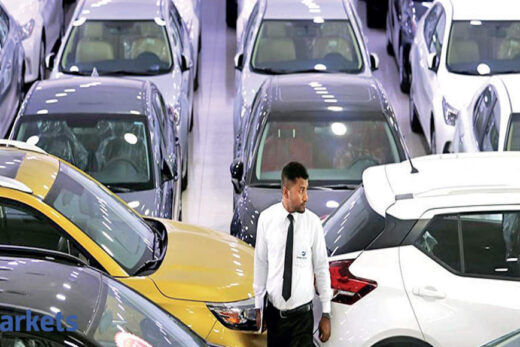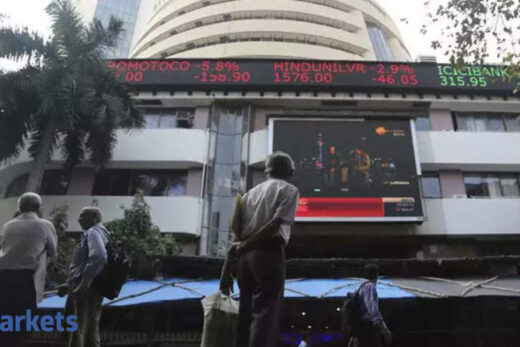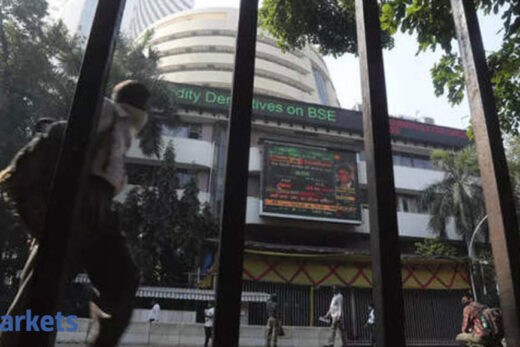All through the pandemic time, you have been very vocal about demand recovery. You saw it coming. Nobody believed it. Now everybody is endorsing it. But are you also surprised with the V-shaped recovery?
I do not understand all these V-shape, W-shape, K-shape. I am ignorant about it all. But I was pretty confident that the Indian economy is very resilient and the moment the restrictions and the limitations of the pandemic were over, it bounced back. Even though the pandemic is not officially over, there is very little impact. People have been getting back to what they were doing earlier. Whether that leads to a V-shape or K-shape or whatever recovery, I do not know but I certainly expected this to happen.
Where is the demand coming from? There has been job losses, the MSE, SME segment has taken a hit. One of the mainstay of Maruti is still entry level cars. But there seems to be no impact of the weak economy!
No but we also must remember that in 2019-20, for various reasons the sale of cars and the demand for cars fell 18% against the normal growth which we have had every year. We had an 18% decline and this year again for the first two quarters they were not much in the way of sales. So there were a lot of people who would have bought cars last year and this year in the first six months and who had not done that.
Added to that was the factor that the personal transport requirements went up because shared transport was not something which was acceptable to a lot of people. It will probably come back shortly but at this point of time, everybody wants individual transport and the small car sector has picked up faster than anything else.
When do you think things will come back to 2017-2018 levels because that was the level from which the auto industry in India started decelerating?
In 2021-22, we will come back somewhat below what we were in 2018-19. But the difference will not be too much and in 2022-23 I expect we will get beyond what it was in ‘18-19 and ‘17-18.
And do you see the same kind of mix to come back for Maruti which is dominated by entry level cars? Or given that the shape of the economy has changed, affordability has increased and interest rates are low, could the tilt be towards higher category of cars like SUVs where your margins are higher?
Our margins being higher is not what determines demand. Demand depends on what the consumer wants. Gradually the consumer will get back to his old pattern where you still want small sized cars but with all kinds of electronics and other gadgets so that it gives him a feeling that he is driving something closer to a luxury car.
But remember, the demand for cars in terms of the growth rate which we have been experiencing in the last five years, has been declining and the CAGR for these five years was only 1.5% and getting back to those rates of growth does not really serve the purpose. But I do believe that the government in this Budget has changed policies very significantly and in an important manner. These changes, which will take place in the course of the next year or two and make a big difference to the way industry grows, the economy grows. The entire approach to economic development will give a fresh lease of life.
I hope that the government will also take into account the need for accelerating the demand for cars because without cars growing, the double digit growth of manufacturing which the finance minister talked about and which she said is essential. I agree with her totally. It is essential for reaching the $5-trillion economy that is going to be much more difficult if the auto sector does not grow rapidly.
But despite no GST cut, auto demand has made a comeback. So some would argue that does the industry actually need a GST cut?
You are looking at it from a very short perspective. I just said that getting back to what it was in 2016-17, 2017-18, 2018-19 does not serve any purpose because in that period the growth rate of the auto industry was 1.5%. If we get back to 1.5% growth, how do we get our double digit growth in manufacturing? You have to look beyond this short term where the demand has bounced back on a very small base that existed in 2019-20 and 2020-21. There was suppressed demand but that does not mean that this demand will continue for the next 10 years and it will give us double digit growth.
Last time when we saw good demand in the auto sector, the tailwind of low commodity price was very supportive. But in the last six months, extraordinary things have happened in the commodity prices, steel prices, rub prices, raw material prices. How would you balance demand versus the uptick in raw material prices?
Raw material prices have increased substantially and you have seen that in terms of the increase in the prices of cars which almost every automaker has had to make. Any increases in prices does not help support the faster growth of the automobile industry.
If commodity prices stabilise plus minus 5% from the current level, will you be able to come back and take your margins at normal levels? When I say normal levels, is early double digit the normal trend for Maruti?
What you are talking about is all for the future and a little bit speculative. I am afraid I am not in a position to comment on that. Let us see what happens.
One heartening factor for the auto industry has been that inventory levels have been low and discounts have been missing. Do you see this trend sustaining for the better part of 2021?
Discounts are a function of the demand and supply position in the market. It is not that discounts are given because companies want to give discounts. Discounts are the way of the market clearing and matching the demand and supply. The current level of discounts have fallen because there is a shortage of vehicles in the market for various reasons — whether it is the problem of semi-conductors which has restricted productions for many manufacturers or some supply of components from somewhere. The production today is short of what the current demand is. In future we have to see how the demand supply equation works out and the extent of discounting in the market will be determined by this equation of supply and demand.
When Maruti’s Chairman looks at the market cap of Tesla, does it make him wonder or does it inspire him that that is the future of the automotive industry?
I do not think it has any relevance for us. We watch what is happening, but it does not affect what we do.
But for those who are saying that electric cars are going to be a new normal at least on Indian roads after five years, are they too ahead of the curve?
I do not see a large number of electric cars on the road in five years because the various conditions which will determine the growth of electric cars and consumer acceptability do not exist.
What are those conditions which will promote electric cars in India?
There is no battery manufacturing in India and that is the biggest handicap because batteries are the key to electric vehicles. All the electric cars which are being made today are based on the cells or batteries imported from China. I doubt if we can ever build a large electric vehicle industry based on imported cells from China.
The second factor is that at the moment there is not even a proposal for putting up a battery manufacturing unit in India.
The third is that the technology for batteries has not changed or improved in the manner which is expected and the cost of batteries has not fallen near what was expected. The result is the cost of building electric vehicles is very high and India is over 70% the small car market. Small car manufacturers are reluctant to electrify their vehicles because the cost was beyond what customers can afford and are willing to pay. Then there is the whole question of infrastructure and charging facilities. I was reading the other day that some customers are complaining about the range of a particular make of electric vehicles. So, these are all issues which will come up.
Finally, we also have to deal with the fact that even if we start manufacturing cells in India, the current technology is based on use of lithium. Lithium is imported and a large percentage of lithium resources of the world — nearly 80% is controlled by one country and the strategic implications of that also have to be considered by policy makers in India. All these factors will become relevant over the next five years and because of these I do not see rapid growth and acceptability of electric cars by customers in India.
Why is Maruti not a prominent player in the export market?
We have to balance the export market with the domestic market and that is the most important thing. and when you say there is a large export market potential for us, we are fundamentally a small car maker and the market for small cars the world over is still quite limited. It is not as if there is a huge market and other manufacturers are making small cars all over the world. We are not makers of what constitute say 80% or 90% of the market in the world today — the larger cars.
Maruti had a great launch in the SUV segment. You have gained market share, your margins were the highest but that is one pocket where competition has intensified. How do you see the SUV space moving in India because suddenly every auto maker wants a big pie of it?
The market for SUVs is growing and when the market for a particular product grows, all manufacturers want to get into that. That is exactly what is happening and what will continue to happen as long as this market for SUV continues to grow.



